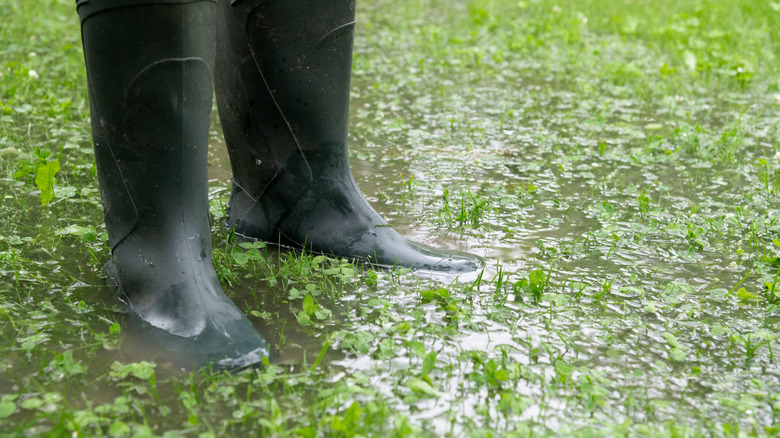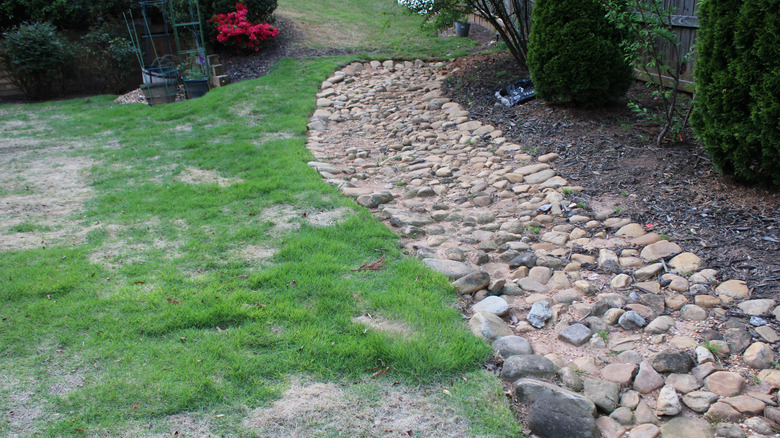The Smart Solution To Prevent Erosion In Your Yard From Overflowing Storm Water
Standing water is more than just a frustrating eyesore. Ponding in areas of the yard can cause plants to die, which can lead to compacted soil and erosion. If it's your neighbor's flooding water that's ruining your yard, you can try addressing it directly with them in the hopes of working together to find a solution. Definitely check local ordinances and understand your rights in this matter. The problem with water drainage issues goes deeper than aesthetics. Poor drainage can damage your foundation if standing water pools close to the house. This can cause major issues with the integrity of your home's structure, which can be very expensive to fix. It can also draw mosquitoes, which bring with them a whole host of diseases in addition to being a backyard nuisance.
One smart solution to prevent overflow in your yard resulting in erosion, is a dry creek bed. Not only will this give the standing water somewhere to go, but it's a beautiful addition to your yard, rain or shine, and diverts water flow to an area that should have much better drainage. A dry creek bed is essentially a small ditch filled with rocks, so it also serves as a focal point of your landscape design. Plus, it offers an opportunity to plant water-loving species along its banks. While you can hire a professional to install a dry creek bed, it's quite easy to build one yourself.
A dry creek bed is a beautiful solution to drainage issues
To begin with, you first want to mark out the design of the dry creek bed. You can use landscape stakes, chalk lines, or a couple of old garden hoses for this. A creek bed that is at least 3 feet wide will allow plenty of room for water to flow when it rains. Dig the trench so it slopes toward the center of the bed, and make it about 12 to 18 inches deep. Tamp the soil to create a solid bed for the rocks and lay down some landscape fabric. Cover the fabric with pea gravel, and then fill with river rock. River rocks look fantastic because they mimic the aesthetics of a real riverbed. You'll find that a mixture of large, medium and small rocks creates a very natural look. Add complimentary plants and shrubs for an even more beautiful effect. Similarly, a swale or grassy channel is another drainage solution that will keep your grass happy and healthy if you have issues with flooding over your lawn area.
Before beginning your dry creek bed project, it's important to first understand how water flows across your property. Water always takes the path of least resistance, so make sure that your creek is not higher than the ground around it. Improperly installed creeks can create problems like stagnant water pools. It's also important to check your city's building codes and homeowner's association's regulations. If the creek diverts water onto public or neighboring property, you could be violating your HOA regulations. Also, call 811 before beginning any digging project to ensure you don't accidentally hit any underground utility lines.

